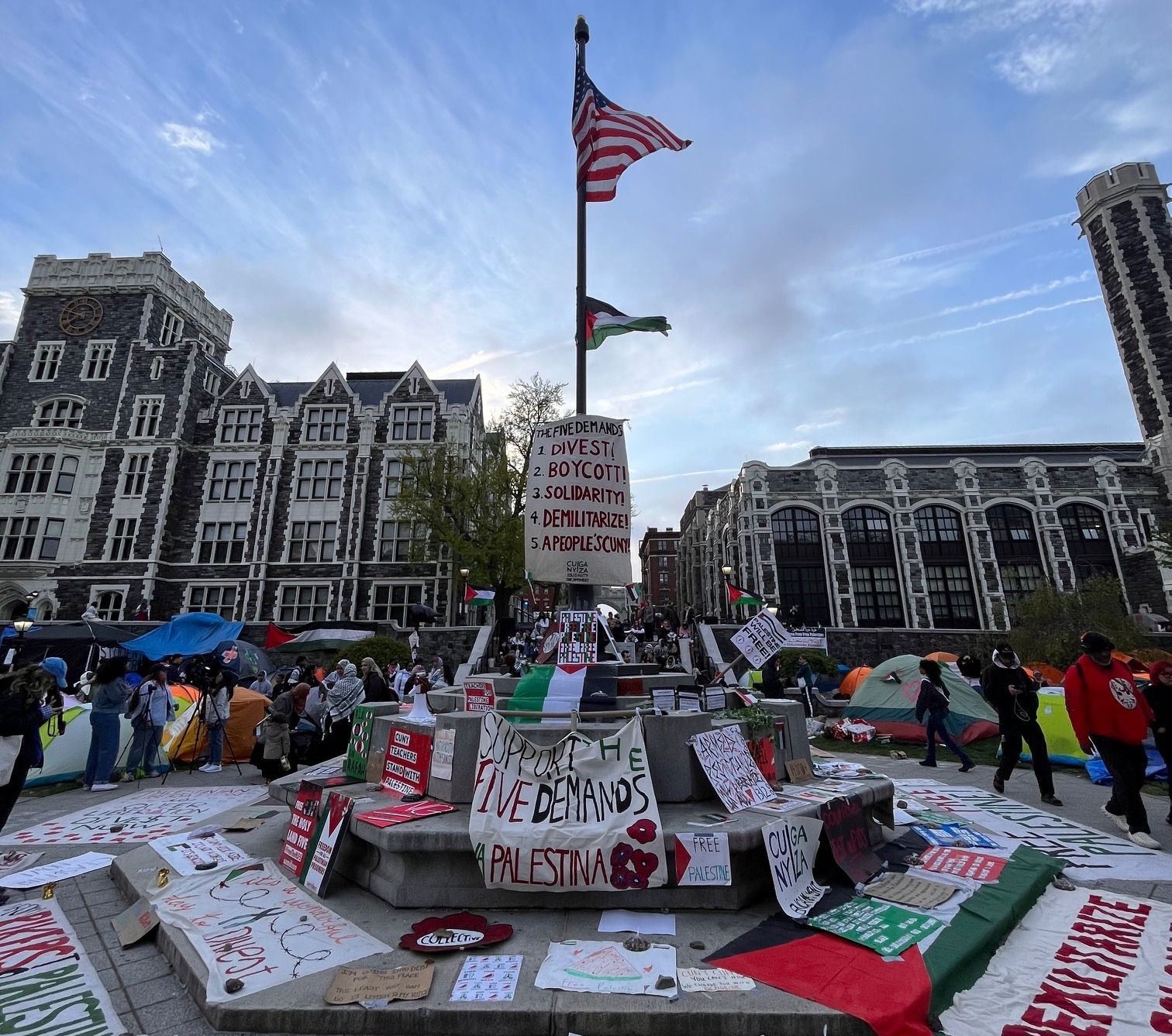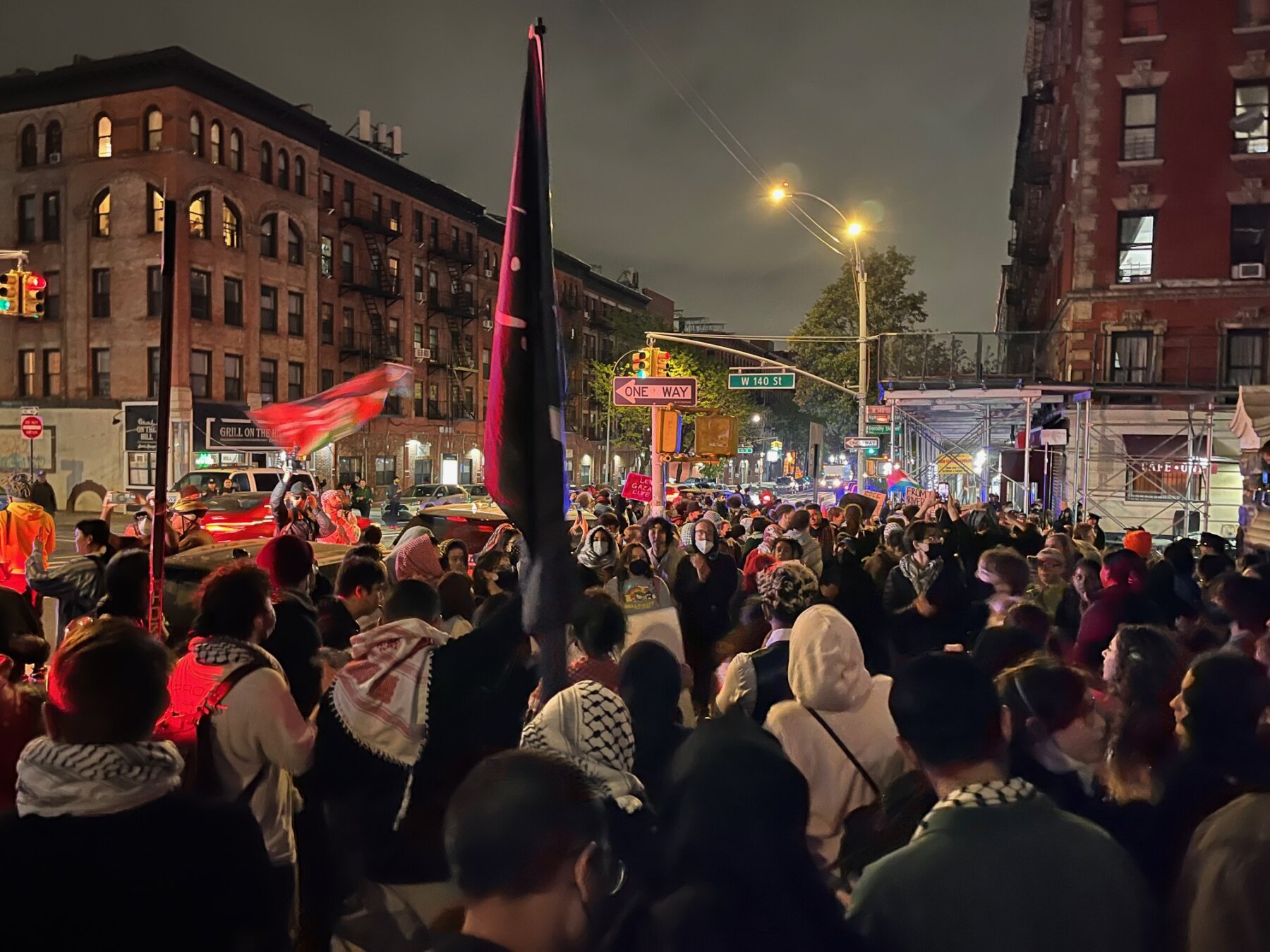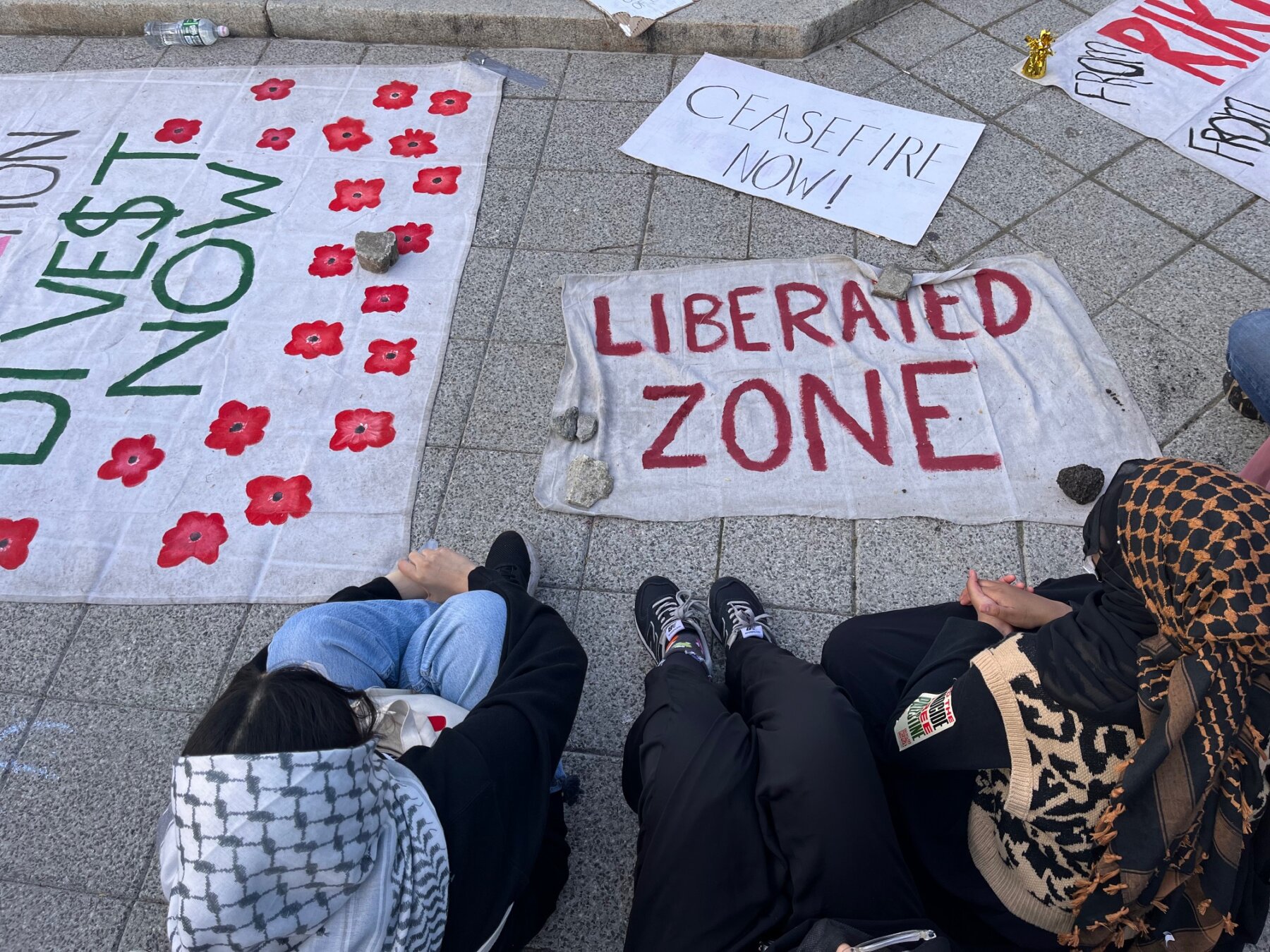
I spent the final hours of my spring break running up and down one of the main blocks in front of my college campus. On the night of April 30, the NYPD had surrounded the City College of New York, erecting barriers at nearby intersections and preparing to make arrests. Pro-Palestinian protesters — many of whom were among the 150 students I estimated had encamped on the school’s quad for the past six days, along with another few hundred who had arrived that evening — confronted police at every barricade. As the editor of the campus news outlet The Paper, it was my job to understand what had just happened. I also knew few students were eager to speak to a journalist.
As I stopped at the locked gate at Amsterdam Avenue and 138th Street, the one I walked through nearly every day, I recognized a student clinging to the bars, signaling to bystanders for help. I ran over immediately. “Are you OK?” I asked. “Do you have a way out?” She didn’t. And she was scared.
I told her I was the editor of the college newspaper, and she said she was familiar with our writing. While protesters on both sides of the gate worked to help her climb over it, I asked what was going on. She confirmed reports of public safety officers pepper-spraying protesters and described the moment protesters decided to break into the Wille Administration Building.
An estimated 179 people were arrested that night, after the City College president and City University of New York chancellor called the police to break up the school’s Gaza Solidarity Encampment, according to the president’s office. City College, predominantly serving students of color from low-income families, has a long history of radical politics and protests. The confrontation between police officers and protesters left the campus community with a lot of questions — questions that are our job, as journalists, to answer.

Over the past week, right before finals, I was the Paper’s only writer of our five-person staff covering the CCNY encampment and demonstrations, interviewing more than 40 students. What is clear is that students are significantly more comfortable talking to me when I approach them as a student who also happens to be a reporter, than vice versa. Only 55% of young adults trust information from national news outlets, down from 62% in 2016, according to a 2022 Pew Research survey. I have listened to fellow students’ concerns about their distrust of traditional media, and I understand that their hesitancy is something I have to respect and adapt to.
Some may say the biggest challenge facing students reporting on campus protests is how little distance exists between us and the story. I say it’s why our reporting is so valuable. The protests sweeping more than 80 college campuses across the nation, as of May 7 — and the desire to get to the heart of them — have illuminated the need for student journalism.
Student journalists are on the ground
The campus protests did not occur in a vacuum. Student journalists across the country were on campus, feeling the tension build all semester. At City College, we lost access to our campus in the final weeks of the school year, my last one before graduating. As a classmate, I knew what the protesters were risking, and as a journalist, I listened to why they were willing to risk it. Regardless of where I stood on the issue, and the skepticism with which I had to approach any claim, I took my sources seriously. This is what any journalist, student or otherwise, should do.
Also like any journalist should, I spoke to students and faculty like individual people who each have a story to share. I asked if they were safe before I asked them to recount the traumatic or emotional events they had just experienced. It helped them understand that I saw them as more than a link to information.

Journalists are supposed to track down facts, and then use them to tell a story. And student reporters have gone to great lengths to find what is human and true on their campuses. At UCLA, the Daily Bruin has constantly published stories, even after their reporters were assaulted by counterprotesters. At the University of Southern California, the editor-in-chief of the Daily Trojan has tried to keep a reporter and photographer available “at all hours” to keep up with the protest news. And at The Paper, despite lacking the funding and large staff of private university newsrooms, we were able to update readers every day with new articles and social media posts, covering the failed negotiations between protesters and the university, the university’s justifications for sending in the NYPD and the aftermath of the night that changed our campus forever.
The angles and access that student reporters have provided at this critical moment on college campuses, all while preparing for and taking finals, have started to make traditional journalists take us seriously, too. New York magazine asked the Columbia Daily Spectator’s student journalists to write its May 4 cover story — a moment of recognition for these student reporters and student journalists nationwide.
While the magazine could have produced the article with its own reporters, editors understood that no one would be better on the ground than the reporters who were already sacrificing their studies to get to the heart of the conflict on their campus. “It was clear from the outset that The Spectator was really leading the coverage,” New York editor Nick Summer told CNN.
Understanding students’ skepticism of traditional media
It cannot be underestimated how skeptical the organizers of the pro-Palestinian campus protests sweeping the nation are of journalists. Organizers have told me they feel their message often gets lost in the news about their demonstrations. “We are here for Gaza,” said Hadeeqa Arzoo, a CCNY student and one of the organizers.
Other students I approached didn’t want to talk to journalists because they were scared the university would discipline them. One Hunter College student agreed to speak to me while she set up her tent on April 30, before the chaos, on the condition of anonymity. “That is the looming fear… that they’re going to suspend or expel us,” she said.
Another student told me they didn’t want to be judged for their stance, but they wouldn’t tell me what their stance was.
Beyond the real fears driving both protesters and those who oppose the protests to stay silent is the reality that social media has changed the relationship between protesters and reporters. In 1969, when Black and Puerto Rican students took over the South Campus at CCNY, they needed traditional reporting to spread their message and demands. Today, anyone can do the same thing from their phones and often reach a larger audience. Today’s generation of students doesn’t need to talk to journalists they don’t trust. So, they don’t.
In journalism, we often talk about distance, about taking a step back from the story to be objective. But when we need information from student protesters — as well as the students who feel threatened by them — we have to remember that this is personal for them. They are on their campus, risking their degrees and potential jobs for a cause, and they want to talk to people who understand that. They aren’t willing to risk these things to help reporters who parachute in for a quote and act like they are entitled to the information they are asking for.
If I didn’t know it already, April 30 showed me there are more than two sides to every story. To fulfill our obligation to our audience — to gather and convey the most accurate information and paint a full picture — we cannot forget the responsibility we have to our sources to meet them where they’re at. Today’s students won’t let us.
Tips for Covering Protests
• Avoid focusing on single events that may misrepresent the nature of the protest (i.e., fights between 1-2 people).
• Let visuals and sources speak for themselves.
• Do not report baseless assertions. Corroborate as you would any other story.
• Talk to those involved in the protest as well as those impacted by the protest.
• Consider the safety of yourself and others.
For other safety tips, check out this video from NBC News Group General Counsel Gail Gove.



